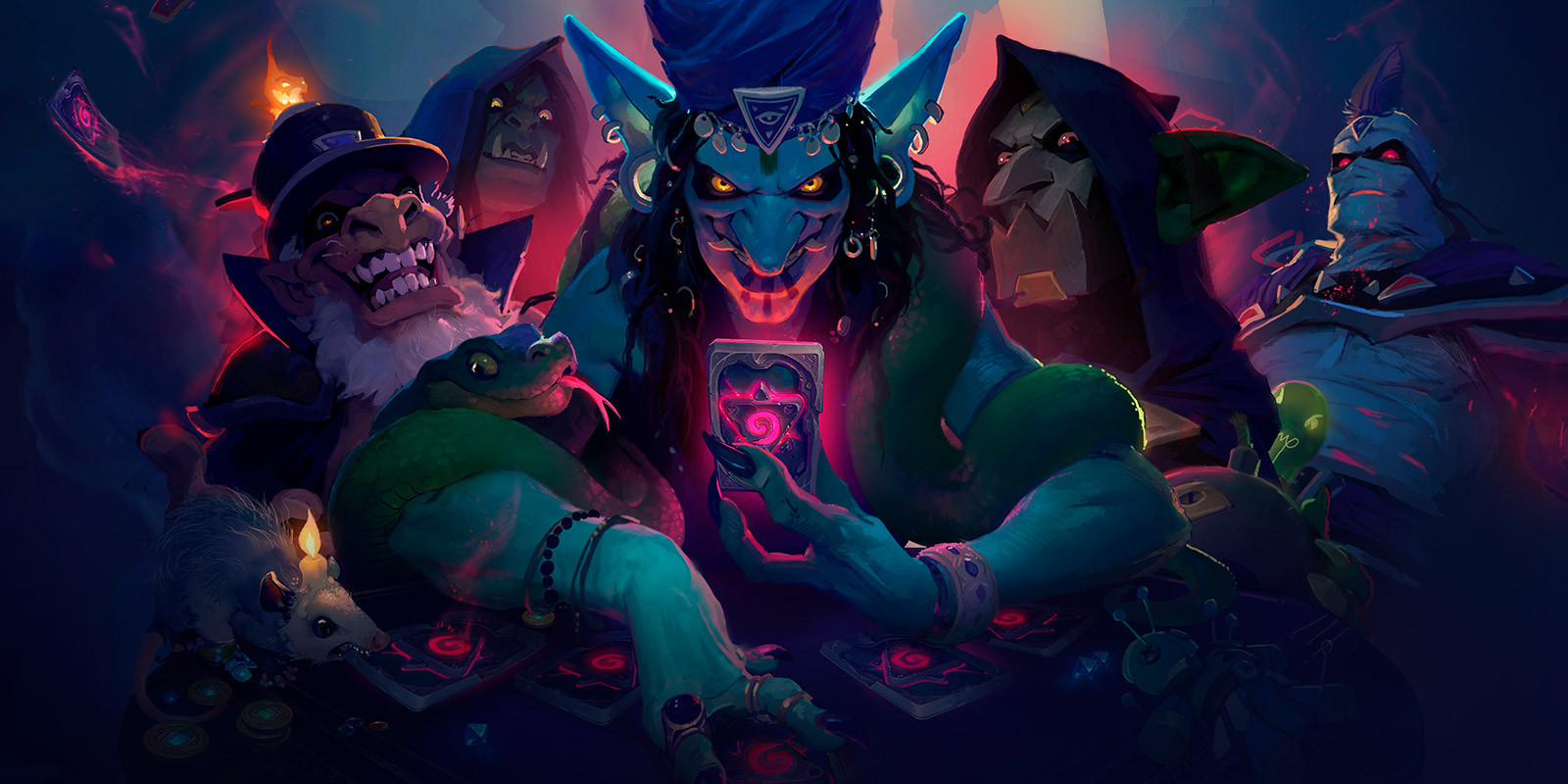The Descent of Dragons expansion was slated to be one of the most powerful releases in the history of the game. To some extent, this was understandable and perhaps even desired.
However, a certain deck was so off the charts that the famously reluctant developers already announced impending nerfs for the next week to as-of-yet-unspecified Shaman cards.
Praise Galakrond! The League of E.V.I.L. has won.
If you take Hearthstone’s background story seriously – long departed from the strict WoW origins it once set out with – there’s already a clear winner in the conflict between the good and the bad guys of this year’s overarching plot.
The baddies scored a knockout punch with Galakrond Shaman, an archetype which completely dominates the ladder without any direct counter available to it, pushing all but one of the other eight classes below a 50% global winrate according to stat tracker site HSReplay at the time of writing.
This is not the kind of release Blizzard envisioned, that’s for sure. Card games thrive upon variety, and though an environment with a clear best deck can still create interesting back-and-forths as the community searches for a counterplay, such mastery over the field was always going to be an issue.
Then again, this is not the first time we’ve seen something like this in Hearthstone, and stock phrases like “it’s on our radar†and “we’re watching it closely†already bring out post-traumatic stress syndromes from members of the community when it comes to overtuned cards and archetypes.
This is why it was such a pleasant surprise to see the developers announce impending, as-of-yet-unspecified nerfs to Shaman in approximately a week’s time.
An unprecedented move for a development team which has always preferred to rely on new content releases or simply the passage of time to solve such conundrums, often to the detriment of the player experience.
Undertaker, a card which enabled one of the strongest aggro decks of all time in Curse of Naxxramas, was left unchecked for over six months, with an intermittent content release also failing to generate any kind of a reliable counter to its strategy.
It was eventually revealed that around 25% of the entire metagame comprised of Undertaker Hunter. Similar levels of degeneracy are on display with Galakrond Shaman, a deck which simply outclasses everything else right now.
Worse yet, it’s the same class (and a similar archetype) which dominated the recent Doom in the Tomb event’s metagame as well off the back of Evolve, and old card which was temporarily rotated back into the main format of the game and wreaked havoc on the balance of the meta.
It was clear from the announcement onwards that Descent of Dragons, the new set in Hearthstone has some incredibly powerful cards.
This wouldn’t necessarily be the problem. The Standard rotation is the game’s premiere format, which only features the last two years’ card sets alongside the evergreen Basic and Classic collections.
It’s a tried and tested system in card games, one which ensures variety across time. It also clearly differentiates between content releases: the sets launched at the beginning of a calendar year stick around for almost twice as long as the ones which come at the end of it. As such, it makes sense to have stronger tools in those that have less time to make an impact.
That said, this release looks extremely strong even by these standards, and it’s living up to these expectations. Though it’s difficult to get an overarching look on the metagame due to one archetype being so extremely dominant, there are certain considerations which already became apparent in just a few days of playing.
For instance, the developers overdosed on the Rush keyword, which gives minions the immediate ability to attack on the board. In past sets, it came with clear stat penalties to offset its strength – now it’s added to standard “vanilla†minions with predictable consequences.
Making such an early change essentially renders the early post-release period a complete dud, with everyone in a holding pattern (and returning to Battlegrounds, Hearthstone’s take on autobattlers) while we wait out the storm.
Though it’s a tough pill to swallow for sure, there’s a silver lining to this. It shows that Hearthstone’s developers are willing to take more chances than they did in the past, and it’s inevitable that they’ll get some things wrong. Perhaps it’s an acceptable price to pay as long as they’re this swift about making adjustments.
A faster content cycle with quicker changes than what we got used to five years ago is inarguably a good thing. Still, one can’t help but wonder about the strengths and weaknesses of the design team considering the fallout of what seems like an absolutely glaring oversight. It will be really interesting to see how (and if) community interest in Hearthstone will rebound after this rapid round of balance changes.

 No ads, our video library,
No ads, our video library,




